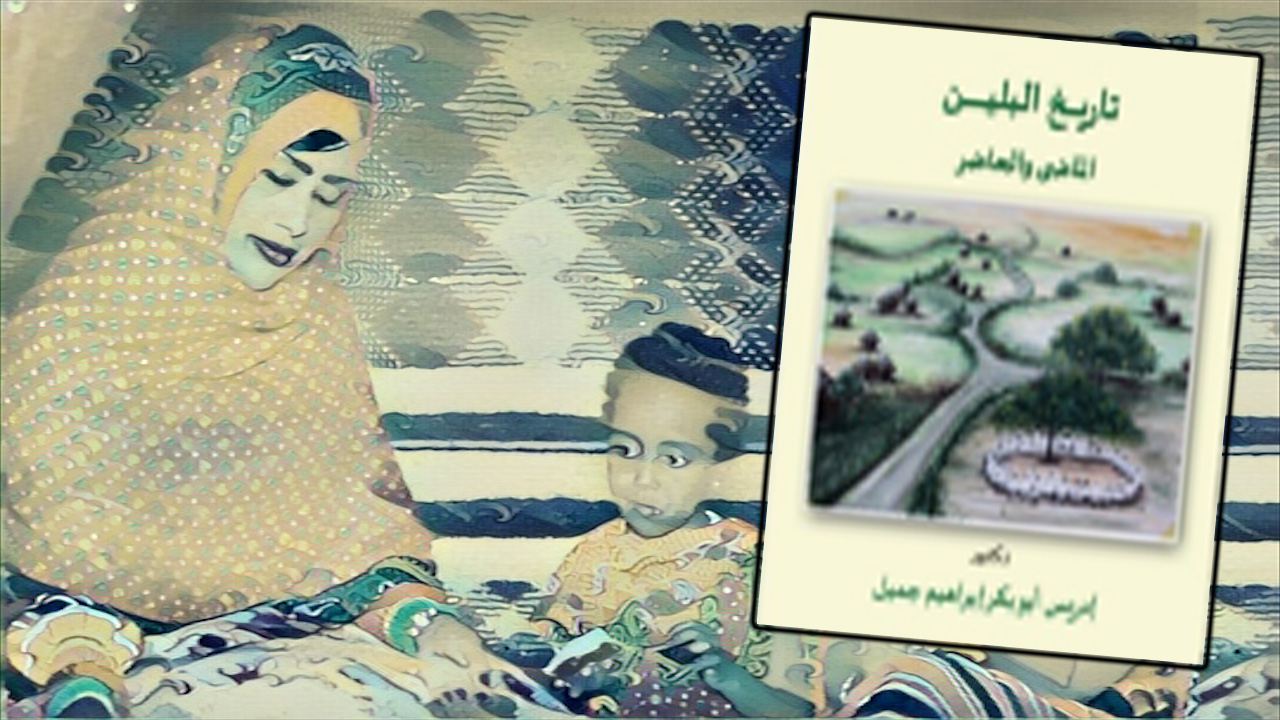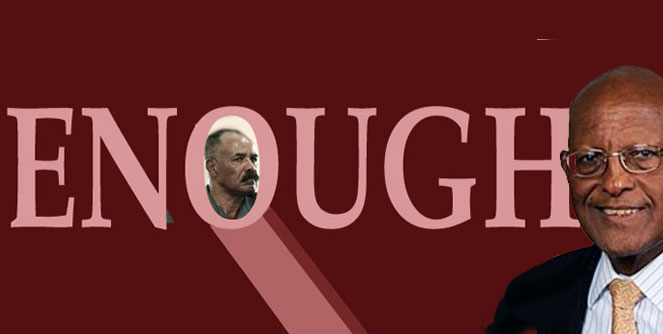“Pre-figurative Politics” Of The Eritrean Lowland League
The birth of Eritrean Lowland League (ELL) has its sociopolitical and historical trajectories that necessitated it. Seeing ELL outside that scope is tantamount to chasing wild goose. The preoccupation with the name is an obvious hurdle given the nature of Eritrean politics. Eritrean body politic seems to gravitate toward this tainted world of perfunctory, trivially benign, and all at the expense of vehement neglect to principles; instead the focus tends to be more on pejoratively superficial world of hollowly induced intuitions that are full of semantics, signifiers, and mischaracterizations of personalities, which are intended to trigger visceral reactions and nothing more. We seem to focus on the most trivial and the most mundane aspects of the body-politic.
Consider the Southern Christian Leadership Conference for example. The birth of SCLC can be pinpointed to this: “The very beginnings of the SCLC can be traced back to the Montgomery Bus Boycott. The Montgomery Bus Boycott began on December 5, 1955 after Rosa Parks was arrested for refusing to give up her seat to a white man on the bus. The boycott lasted for 381 days and ended on December 21, 1956, with the desegregation of the Montgomery bus system.” It is worth adding that “Martin Luther King, Jr. served as President and Ralph David Abernathy served as Program Director. It was one of history’s most dramatic and massive nonviolent protests, stunning the nation and the world.”
Now, people might have dwelled over SCLC’s exclusionary name, perhaps silently, perhaps whisperingly, but it would’ve amounted to no more than comparing the latter to the former, signifying nothing, as it were, an exercise in futility; SCLC had big plans to change the nation subsequently humanity for the better and, by golly, it did.
The take away point here is that the name did not deter the people from all walks of life to join it because the message that it conveyed and the principles for which SCLC stood for was beyond the nomenclature or the acronym by which it is now endearingly and enduringly known for.
Imagine if these heroic individuals were worried about attracting the extreme and radical elements to their midst who would’ve chosen to fight back, as it were, an eye for an eye; or that SCLC was going to worry about a backlash that it would trigger from the Jim Crow and the KKK crowd, both of which would’ve had a derailing effect to the cause that was being advanced. Or more benignly those who were going to make the wrong turn here and the U-Turn there; in a scheme of things, these are an inevitable happenstances that any movement would have to handle accordingly.
The point here is that social and political movements have their trajectories. “Prefigurative politics,” that has its roots in social movements can help contextualize it for us Eritreans. Linda Gordon, historian of social movements not only ties the seemingly disparate movements that burgeoned in the late ‘50s, ‘60s, and early ‘70s, but also captures the spirit and the essence of those movements. For example, Gordon stipulates, demands, really, to compulsorily see “the American New Left as an umbrella movement, a “cluster concept,’ that began in the 1950s with civil rights, traveled through the white student movement, the anti-Vietnam war movement, the women’s-liberation movement, and… taking in also the environmentalism that continued throughout” (p. 103). Seen in this light, the scheme and the historical spectrum offer a coherent narrative into the nature of any movement in that some evolve or devolve while others splinter; some dissipate while others thrive. The larger point of Gordon to consider is this poignant thought:
“These movements shared an anti-authoritarian impulse, a recognition of the need for new analyses of injustice and exploitation, a strategic orientation toward defiance, a tactical reliance on direct action and civil disobedience, a rejection of conformist culture and a creativity in pioneering new cultural and communitarian forms. Recognizing this “long New Left” is vital for examining the flow of participatory democracy ideas and prefigurative politics. (pp. 103-104).
The all too common notion whether one chooses to “fight the system” that he/she sees as a hindrance to a healthy society; or does one become “the change” he/she “wishes to see”? ELL is appropriating the latter & the former at once. The participants in ELL seem to be saying we’ve lived through marginalization; we have seen the anachronistic Eritrean political culture and the reality as they conceive of it is that Eritreans are divided along religious, regional, tribal, ethnic lines. Instead of staying suspended indefinitely between the anvil and the nail and wait for the merciless and hapless Eritrean political hammer to nail them as though they were the coffin, they are refusing to be hammered. ELL(ites) have seen how their people were neglected prior and post-Eritrean revolution. The wrath of Ethiopia’s Scorched Earth Policy, for the most part, was directed at the Lowlanders, who were massacred and pushed out of their homeland in droves to only become refugees in Sudan for the last forty years. As though that was not enough and the reprieve that should’ve come after Eritrea’s independence, the Tigrinya hegemony never paved the way nor did it make any visible effort, say, via UN to allow them to return to their homeland. Therefore, would anyone lay blame on ELL given this grim history of successive wretched life they had to face and endure? I wouldn’t. In fact, I should embrace the fact that they are finally asserting themselves to demand what’s rightly theirs instead of expecting it to be handed to them in a “silver platter.”
They are accepting the reality as they see it and are thus coming out to say ‘nobody else knows more than we the people who have been on the margins of politics of Eritrea for almost forty years and nothing good had come of it, therefore, we the people are starting our own bottom-up sociopolitical movement to usher a new era and we will be part and parcel of the national conversation and ain’t nobody going to stop us now’ seems to be the unequivocal message. The fact is ELL’s official status is that it is an advocacy group and has yet to use Tigre language as its official mode of communication, yet the assumption is running wild as my friend Sal is fantastically worried about regional phraseologies. Before ELL could even join the political sphere I am hastily assuming it inevitably will, because there is a void that I can foresee it playing crucial role in the national policy and political conversation. With ELL’s emergence as important regional and national force, using the outdated pre-independence political discourse analysis will not do, because that is three score years and ten too late, if you will.
The emergence of ELL some might choose to see as this bitter sociopolitical pill; indeed, they may have a point, but absence of any legitimate sociopolitical space that represents Eritrean Muslims in Diaspora, ELL qua ELL is filling an ostensibly important void; a void much as SCLC not only initiated but filled when there was not an entity in existence to do the awfully demanding and the ultimate sacrifices that some of its members paid for. The corollary to such ultimate price, of course, has been to pave the way for those of us who have come from far and near to enjoy our civil rights in the U.S. of A.
Similarly, ELL can organically and ably play such an important role in helping bridge that gap and the least those of us outside its scope and outside its peripheral vision can and should do is embrace it, more importantly, support it.
For some of us, it’s been twenty-some-odd years critiquing, analyzing, and synthesizing the Eritrean Diaspora political landscape, yet not a single organization we have come out in support of, or worked along to help it become a viable opposition. Unlike some of the critiques, I see ELL in such light as that one entity that will and can play constructive role of an umbrella to other Eritrean Muslim social, political, and ethnic community groups, thereby coming to the national scene as they all come in a voice of unison to have discourse about ridding Eritreans from current dire predicament and contribute their share of mission and vision for the future of Eritrea as they conceive of it with the other half of their countrymen and countrywomen.
The idea of a group being from one country or certain region may give erroneous impressions that somehow they speak one language; that they have the same culture; that they believe in monotheist God. The fact is to the contrary. These activists are as diverse as they come: they speak multiple languages; they have different cultural traditions and backgrounds; though, based on the name of the organization one may hastily and erroneously extrapolate some incipient notion that are contrary to the facts on the ground; truth be told, I have spoken to several members and their national aspirations and their vision for Eritrea speaks volumes as they see the way of the future of Eritrea through secular prism.
The mosaic nature of this group of activists may not readily be visible to an outsider, but for someone who has had long conversation with some of its members the world over, as it were, seeing the group’s dynamism not from emic (insider’s viewpoint) but from etic (an outsider’s) perspective. Indeed, it is one of the very reasons why I wholeheartedly see the constructive role that ELL can play; they believe in coexistence amongst and between and within group; they believe in bringing the needed sociopolitical change in the mainland (Eritrea) by applying pressure to the dictatorial government that has been wreaking havoc in the nation for the last 23 years; the corrupt system of governance of the last 23 has been doing nothing more than injecting disharmony, using systematic insider/outsider dichotomies, or, if you will, using the classic “divide & conquer” dark legacies of colonialism that the Italians, the British, and Ethiopia used when they ruled Eritrea, respectively.



Awate Forum